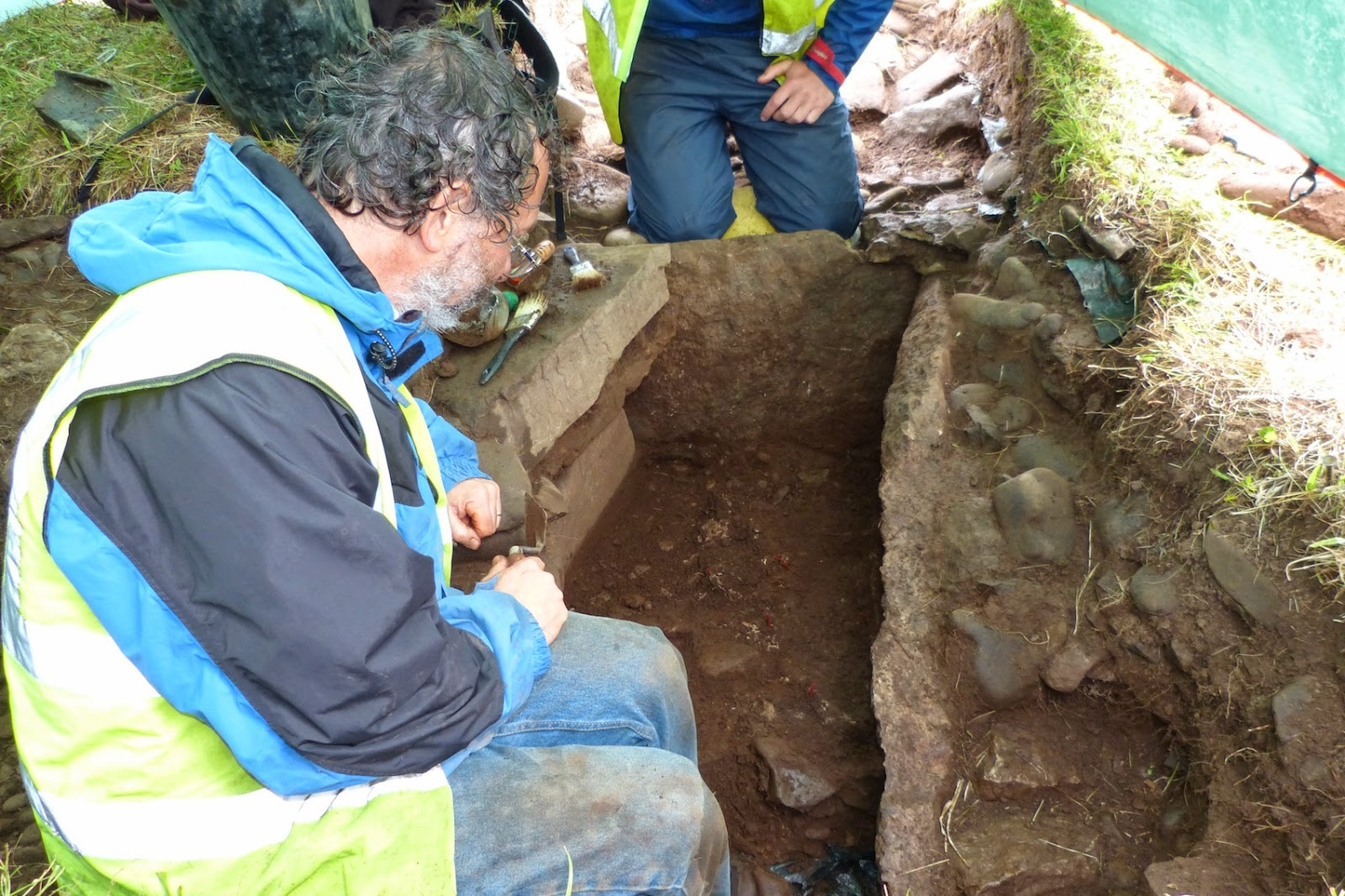Archaeologists excavating a burial site in a remote area of Lochaber have found the remains of a person who is believed to have died more than 3,600 years ago.
The body, which dates back to around 1650BC, was discovered to be curled up in the foetal position.
It is not yet known whether the remains are that of a man or a woman.
The Ardnamurchan Transitions team, which includes Cambridge professor John Robb, began working on a mound, which they called Ricky’s Cairn, at Swordle on the north coast of the Ardnamurchan peninsula in 2010.
Local historian Jon Haylett said: “They knew it contained a Bronze Age cist, part of which they have excavated finding a skull which was dated to 1650BC.
“The rest of the cist is now being excavated by Professor John Robb, of Cambridge University, who is an expert on bones, which is just as well as he is currently revealing the bones of the rest of the body, curled up in the foetal poison on his or her side.”
The team, which visits the area every year, is also working on a nearby neolithic chambered cairn called Cladh Aindreis, where they have permission from Historic Scotland to excavate part of the area.
Mr Haylett explained that the cairn had a long tail of rocks which runs away from Cladh Aindreis towards the north north west.
He said: “They have permission to remove the topsoil and expose the structure of the tail in what will be the largest excavation they’ve carried out in their years of coming here.
“They are allowed to move any rocks which are evidently not ‘in situ’, but they cannot excavate the structure without further permission from Historic Scotland.
“This is a shame as they have already exposed what is probably a small cist in which there is a good possibility that there may be a burial.”
There will be a talk on their work, called The Ardnamurchan Transitions Project: Fleshing out the past through the material remains, at Kilchoan Community Centre tomorrow from 7.30pm to 8.30pm and an open day, including site tours, is to be held at the site on Sunday.
In 2011, the same team found the Viking boat burial at Swordle Bay, the first finds from which were recently displayed at the British Museum.
